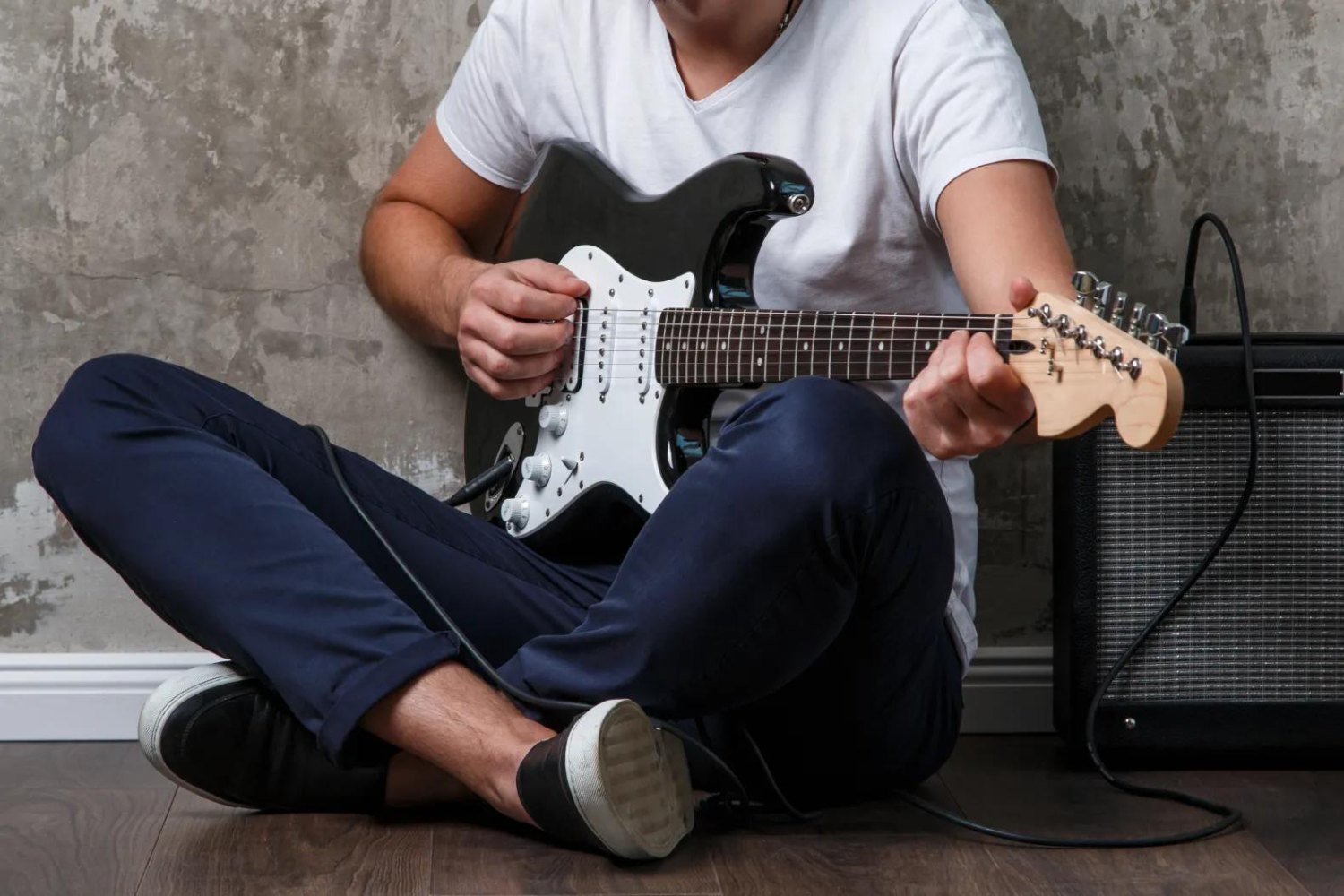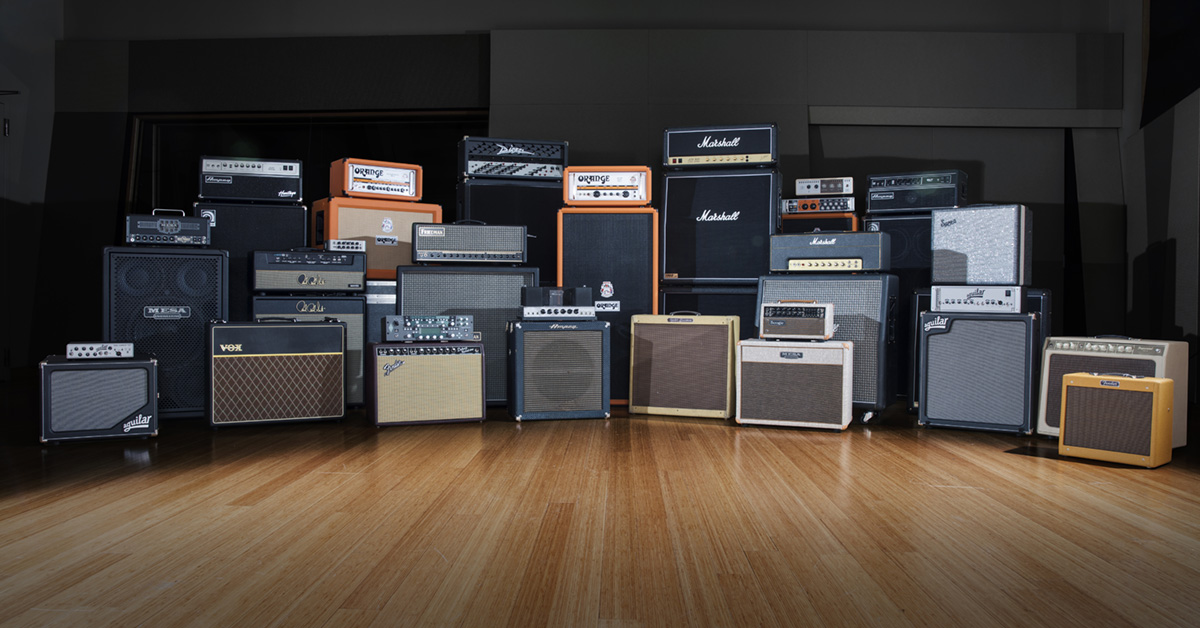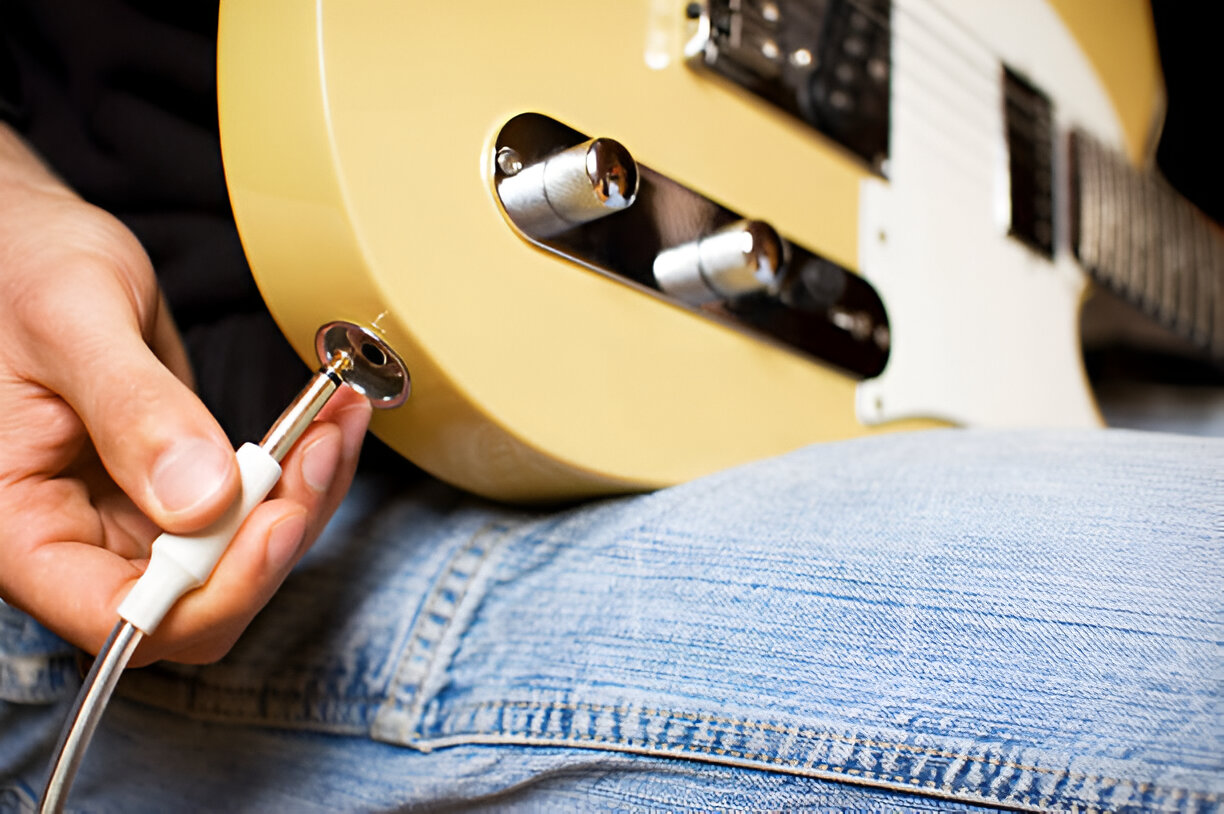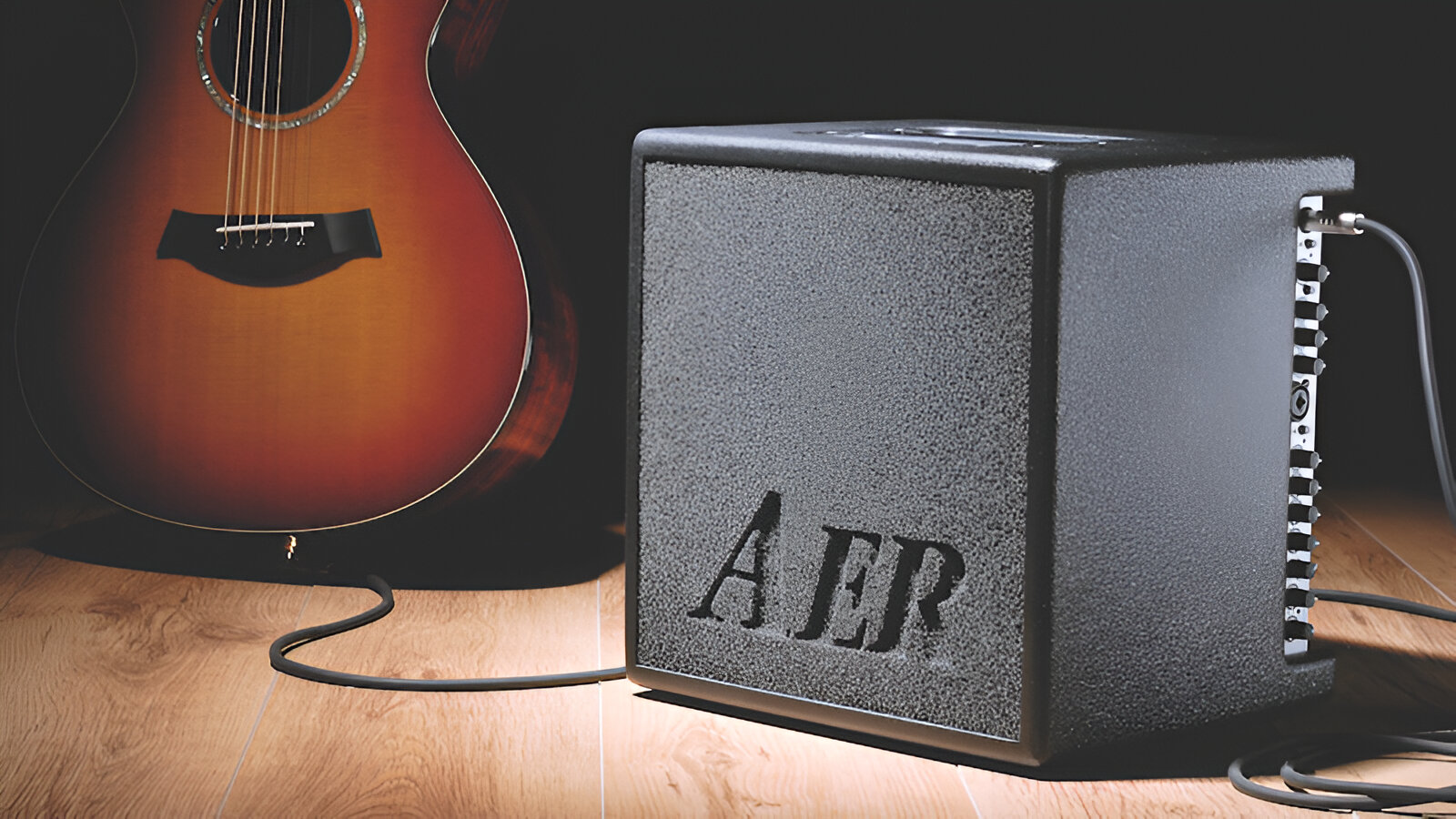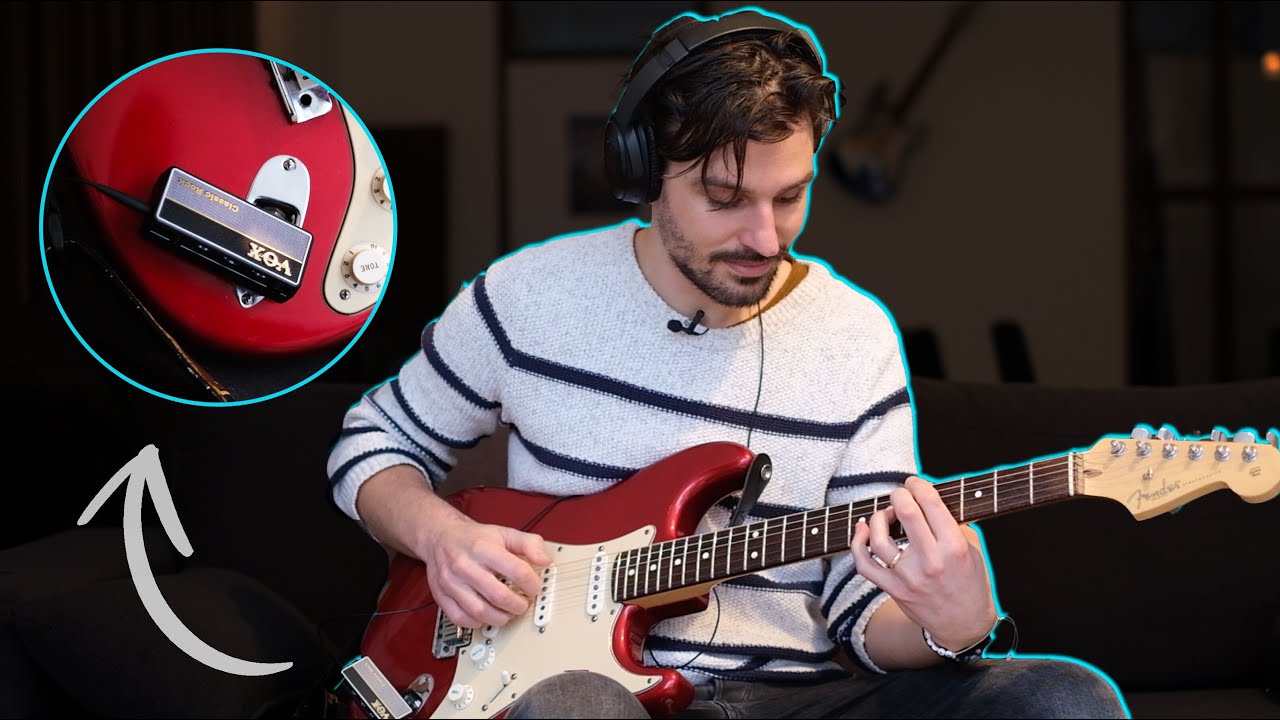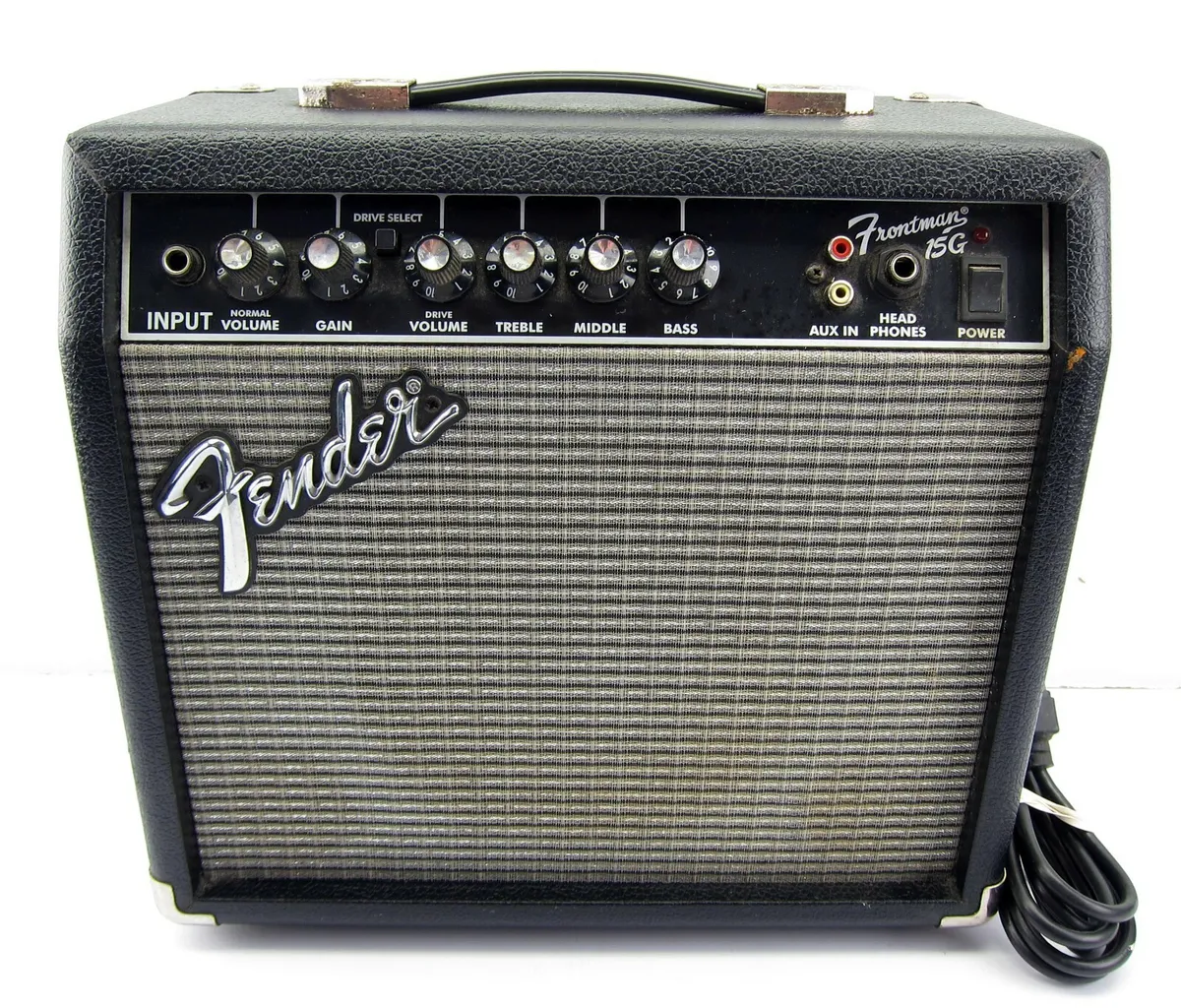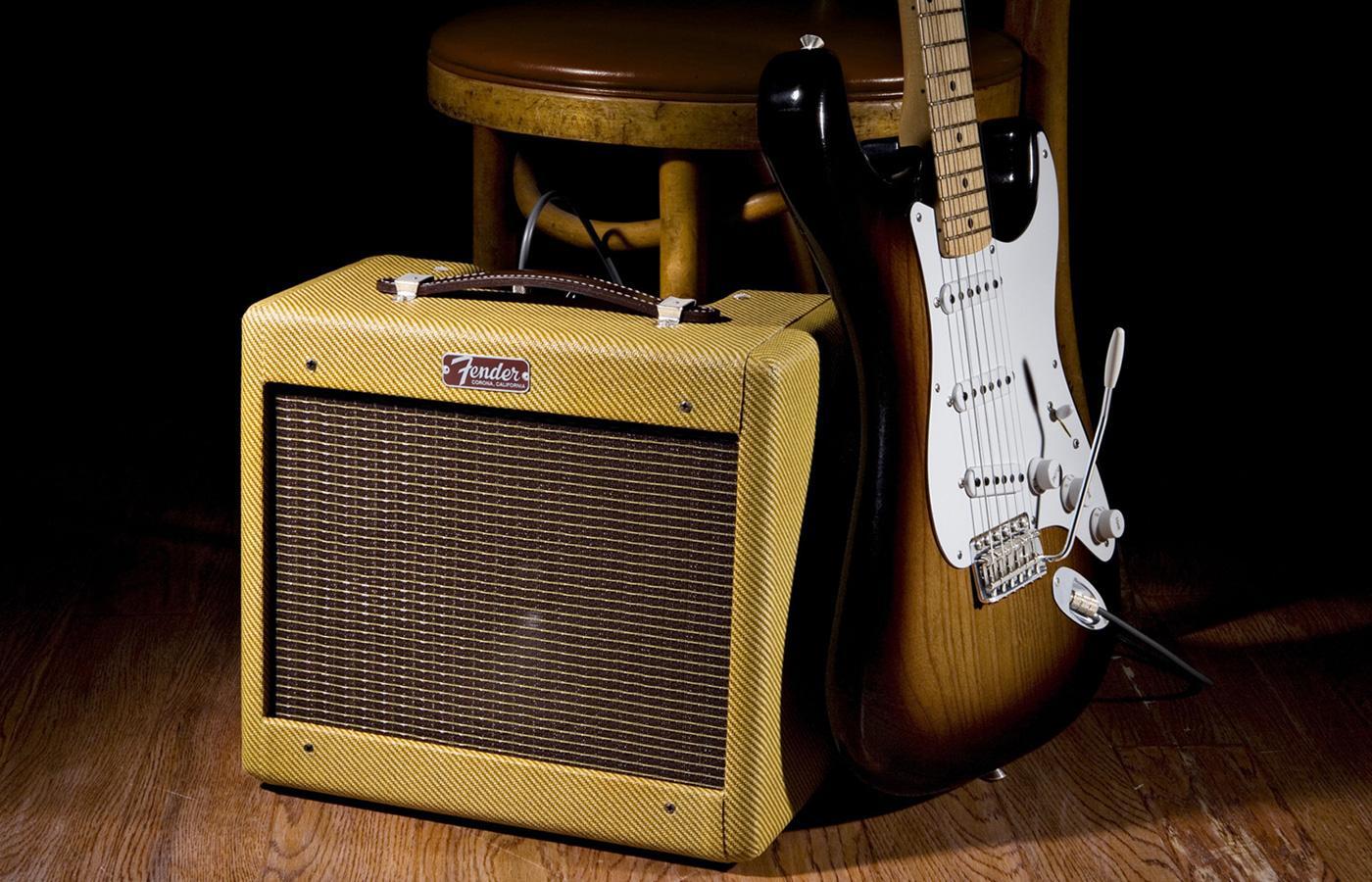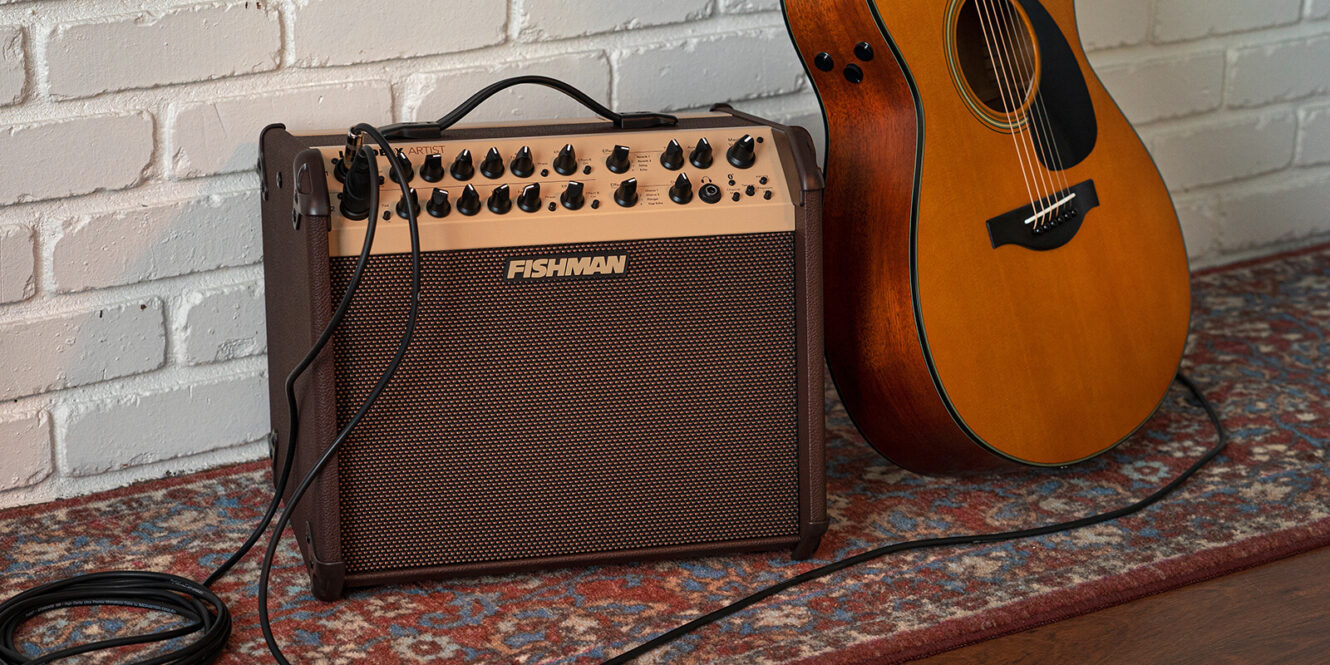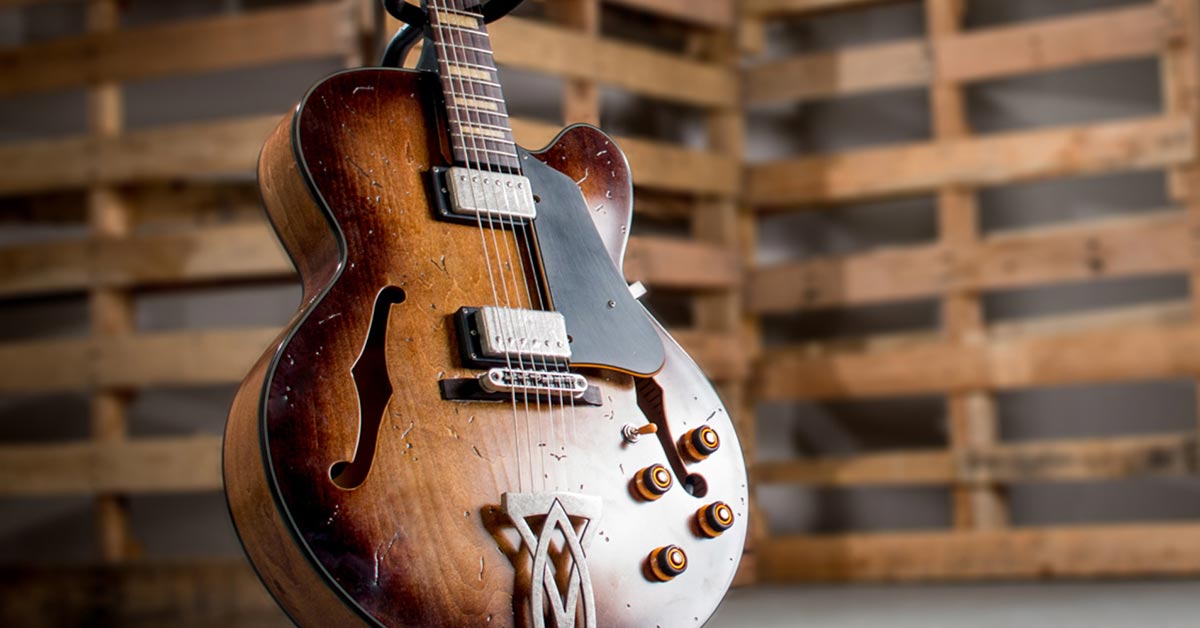Introduction
So, you've got your hands on an electric guitar, and now you're ready to take your musical journey up a notch by adding an amplifier to your setup. Playing an electric guitar with an amp opens up a world of sonic possibilities, allowing you to explore various tones, effects, and volumes. Whether you're a beginner or an experienced guitarist looking to delve into the realm of amplification, understanding how to play an electric guitar with an amp is essential for creating an immersive and dynamic sound.
Playing with an amp not only amplifies the sound of your electric guitar but also introduces a whole new dimension to your playing experience. From clean and crisp tones to gritty distortion and everything in between, the amplifier serves as a canvas for your musical expression. However, before you embark on this electrifying journey, it's crucial to familiarize yourself with the fundamentals of using an amp with your electric guitar.
In this guide, we'll walk you through the essential steps of playing an electric guitar with an amp, from choosing the right amplifier for your needs to understanding the controls and optimizing your playing technique. By the end of this journey, you'll be equipped with the knowledge and skills to harness the full potential of your electric guitar and amp, unleashing a symphony of electrifying sounds that resonate with your unique style and musical vision.
So, grab your electric guitar, plug in your amp, and get ready to embark on an exhilarating musical adventure as we unravel the art of playing an electric guitar with an amplifier. Whether you're aiming to rock the stage, captivate an audience, or simply lose yourself in the immersive world of amplified sound, mastering the art of playing with an amp will undoubtedly elevate your musical prowess to new heights. Let's dive in and explore the electrifying realm of electric guitar amplification.
Choosing the Right Amp for Your Electric Guitar
When it comes to playing an electric guitar with an amp, selecting the right amplifier is paramount in shaping your desired sound. With a myriad of options available, ranging from compact practice amps to powerful stage-ready units, finding the perfect match for your electric guitar can seem like a daunting task. However, by considering certain factors, you can narrow down your choices and make an informed decision that complements your playing style and musical preferences.
First and foremost, consider the wattage of the amp. For practice and home use, a lower-wattage amp, such as a 10-30-watt model, may suffice, offering sufficient volume for personal jam sessions without disturbing the neighbors. On the other hand, if you intend to perform in larger venues or with a band, a higher-wattage amp, such as a 50-100-watt model, can provide the necessary power and projection to fill the space with your electrifying sound.
Next, explore the amp’s tonal capabilities. Some amplifiers are tailored for specific genres, offering distinct tonal characteristics suited for blues, rock, metal, or jazz. Additionally, consider whether you prefer a solid-state amp for its reliability and clean tones, or a tube amp for its warm, dynamic sound and natural overdrive when pushed to higher volumes.
Furthermore, assess the amp’s built-in effects and features. While some guitarists prefer the simplicity of a straightforward amp with basic tone controls, others may seek amplifiers with built-in reverb, delay, modulation effects, and customizable presets to expand their sonic palette without the need for external pedals.
Portability and convenience are also crucial factors to contemplate, especially if you plan to transport your amp frequently or require a compact solution for practice sessions on the go. Additionally, examining the amp’s speaker configuration and size can influence the overall sound dispersion and tonal characteristics, particularly in relation to bass response and high-frequency clarity.
By carefully evaluating these aspects and considering your specific playing environment and musical objectives, you can narrow down the options and select an amp that resonates with your artistic vision and sonic aspirations. Remember, the right amp is not merely a tool for amplification but a partner in shaping your sonic identity and bringing your musical expressions to life.
Setting Up Your Electric Guitar and Amp
Before unleashing the captivating sounds of your electric guitar through an amplifier, it’s essential to ensure that both your instrument and amp are properly set up for an optimal playing experience. This involves a series of steps to establish the connection, configure the settings, and prepare for an immersive sonic journey that resonates with your musical vision.
First and foremost, start by connecting your electric guitar to the amplifier using a high-quality instrument cable. Ensure that both the guitar and amp are turned off before making the connection to prevent any unwanted noise or signal interference. Most electric guitars feature a standard 1/4-inch output jack, which seamlessly plugs into the input jack on the amp, initiating the sonic pathway that transforms your guitar’s vibrations into amplified sound.
Once the physical connection is established, it’s time to configure the settings on your amp. Start by setting all tone controls, including bass, midrange, and treble, to their neutral positions, allowing for a balanced starting point. Adjust the volume and gain controls to modest levels to prevent sudden bursts of loud sound when you power on the amp.
Before powering on the amp, double-check that the master volume is set to a low level to avoid any unexpected volume surges. Once everything is in place, switch on the amp, allowing it to warm up for a few moments before engaging in your sonic exploration. Additionally, if your amp features built-in effects or presets, familiarize yourself with the controls and functionalities to harness the full potential of your sonic arsenal.
While setting up your electric guitar and amp, it’s also advisable to ensure that the power source for your amplifier is stable and grounded to prevent any electrical issues. If you’re using pedals or external effects in conjunction with your amp, integrate them into your setup with the appropriate cables and power supply, ensuring a seamless integration of your sonic tools.
By meticulously setting up your electric guitar and amp, you lay the foundation for a harmonious and responsive musical journey, where your artistic expressions seamlessly intertwine with the sonic capabilities of your amplifier. This meticulous preparation sets the stage for an immersive and dynamic playing experience that resonates with your unique musical identity.
Understanding the Controls on Your Amp
Mastering the controls on your amplifier is essential for unlocking a diverse range of tones and effects, allowing you to sculpt your sound with precision and finesse. Whether you’re delving into the realm of clean tones, experimenting with overdriven textures, or adding atmospheric effects to your sonic canvas, a comprehensive understanding of your amp’s controls empowers you to shape your musical expressions with confidence and artistry.
Let’s start with the basic tone controls. Most amplifiers feature knobs for bass, midrange, and treble, enabling you to adjust the tonal balance of your sound. The bass control influences the low-frequency response, allowing you to add warmth and depth to your tone or tighten the low end for a more focused sound. The midrange control shapes the mid-frequency spectrum, offering the ability to carve out space for your guitar’s sonic presence in the mix. The treble control governs the high-frequency content, allowing you to add shimmer and clarity or dial back the brightness for a smoother sound.
Next, familiarize yourself with the gain or overdrive control, which governs the amount of distortion or saturation in your sound. This control is pivotal for achieving various levels of grit and crunch, from subtle overdrive to searing distortion, adding character and intensity to your playing dynamics. Additionally, many amplifiers feature a master volume control, regulating the overall output level, allowing you to achieve the desired volume without compromising the tonal characteristics.
Furthermore, explore any built-in effects or modulation controls on your amp, such as reverb, delay, chorus, or tremolo. These effects can add dimension and ambiance to your sound, creating spatial depth and textural richness that elevate your sonic palette. Familiarize yourself with the parameters of each effect, such as decay time for reverb or rate and depth for modulation effects, to tailor the effects to suit your musical style and preferences.
Some amplifiers also offer additional features, such as presence controls, resonance adjustments, or built-in equalization options, providing further opportunities to fine-tune your sound to perfection. Experimenting with these controls and understanding their sonic impact equips you with the knowledge to craft a diverse array of tones that resonate with your musical vision.
By delving into the intricacies of your amp’s controls, you embark on a sonic exploration that transcends conventional boundaries, allowing you to sculpt your sound with nuance and creativity. Understanding the nuances of each control empowers you to harness the full potential of your amplifier, transforming it into a versatile instrument for sonic expression and musical innovation.
Proper Technique for Playing with an Amp
Playing an electric guitar with an amplifier requires a nuanced approach to technique, encompassing not only the physical interaction with the instrument but also an understanding of how to leverage the sonic capabilities of the amplifier to elevate your performance. By honing your playing technique and embracing the symbiotic relationship between your guitar and amp, you can unlock a world of expressive possibilities and captivating tones that resonate with your musical vision.
First and foremost, pay attention to your picking dynamics and hand placement. Experiment with varying degrees of pick attack and articulation, adjusting the force and angle of your picking hand to modulate the intensity and clarity of your notes. Additionally, explore the tonal nuances that emerge from picking closer to the bridge for a brighter sound or towards the neck for a mellower tone, allowing you to infuse your playing with a diverse range of sonic textures.
Furthermore, consider the impact of your guitar’s volume and tone controls on your playing dynamics. By judiciously adjusting the volume and tone knobs on your instrument, you can sculpt the character of your sound on the fly, transitioning from clean, shimmering tones to searing overdriven textures with seamless precision. Experimenting with these controls empowers you to craft dynamic and expressive performances that captivate the listener’s ear.
When it comes to utilizing the amplifier’s controls, pay attention to the interplay between gain, tone shaping, and volume. Explore the expressive potential of your amp’s overdrive or distortion, modulating the gain control to achieve the desired level of saturation and harmonic richness. Additionally, leverage the tone controls on your amp to tailor the frequency response, sculpting the tonal character of your sound to suit the musical context and your artistic intentions.
Moreover, embrace the spatial dimension of playing with an amp by experimenting with the amp’s spatial effects, such as reverb and delay. These effects can add depth and ambiance to your sound, creating an immersive sonic environment that enhances the emotive impact of your playing. By judiciously integrating these effects into your performance, you can imbue your music with a captivating sense of space and atmosphere.
Finally, pay attention to the physical positioning of your amplifier and its interaction with your guitar. Experiment with the amp’s placement in relation to your playing position, exploring how proximity and angle influence the projection and dispersion of the sound. Additionally, consider the impact of feedback and resonance, adjusting the amp’s positioning to harness the natural acoustic properties of the environment while mitigating any unwanted sonic artifacts.
By embracing a holistic approach to playing with an amp, encompassing both technical finesse and sonic exploration, you elevate your musical performance to a realm of expressive depth and sonic allure. Embracing the symbiosis between your electric guitar and amplifier, you embark on a sonic odyssey that transcends conventional boundaries, inviting the listener into a captivating world of electrifying sound and artistic innovation.
Tips for Getting the Best Sound from Your Amp
Unlocking the full sonic potential of your amplifier involves a combination of technical finesse, creative exploration, and an understanding of how to harness the amplifier’s capabilities to achieve the desired tonal palette. By implementing a few key tips and techniques, you can elevate your playing experience and extract the best possible sound from your amp, creating a sonic tapestry that resonates with depth, clarity, and expressive richness.
First and foremost, take the time to experiment with the amp’s controls and settings. While it’s essential to familiarize yourself with the basic functions, such as volume, gain, and tone controls, don’t hesitate to venture into uncharted sonic territories. Explore the nuances of each control, from subtle adjustments to radical shifts, to discover the sonic textures and tonal variations that align with your artistic vision.
Additionally, consider the impact of the amp’s placement and orientation within your playing environment. Experiment with the amp’s positioning in relation to reflective surfaces, room acoustics, and the spatial arrangement of your performance space. By fine-tuning the amp’s placement, you can optimize the sound dispersion, minimize unwanted resonances, and enhance the overall sonic clarity and presence of your amplified guitar tones.
Furthermore, pay attention to the interplay between your guitar’s pickups and the amp’s input sensitivity. Experiment with different pickup selections and configurations on your electric guitar, noting how each setting influences the amp’s response and tonal character. By exploring the sonic interaction between your guitar and amp, you can uncover a diverse range of tonal possibilities, from sparkling cleans to searing overdriven textures.
When delving into the realm of effects and modulation, approach these sonic embellishments with a spirit of creativity and restraint. While it’s tempting to indulge in a myriad of effects, judiciously applying effects such as reverb, delay, and modulation can add depth and dimension to your sound without overwhelming the sonic landscape. Experiment with varying effect parameters to tailor the spatial and textural qualities of the effects to suit your musical context and performance style.
Additionally, consider the sonic impact of speaker placement and mic positioning when amplifying your guitar sound for live performances or recording sessions. Fine-tuning the placement of the amplifier’s speaker cabinet and the microphone can significantly influence the captured sound, allowing you to sculpt the tonal characteristics and spatial imaging to align with your sonic preferences and production objectives.
By embracing these tips and techniques, you embark on a sonic odyssey that transcends conventional boundaries, inviting the listener into a captivating world of electrifying sound and artistic innovation. Through mindful experimentation, technical finesse, and a creative spirit, you can unlock the full sonic potential of your amplifier, shaping a sonic identity that resonates with expressive depth and immersive allure.







